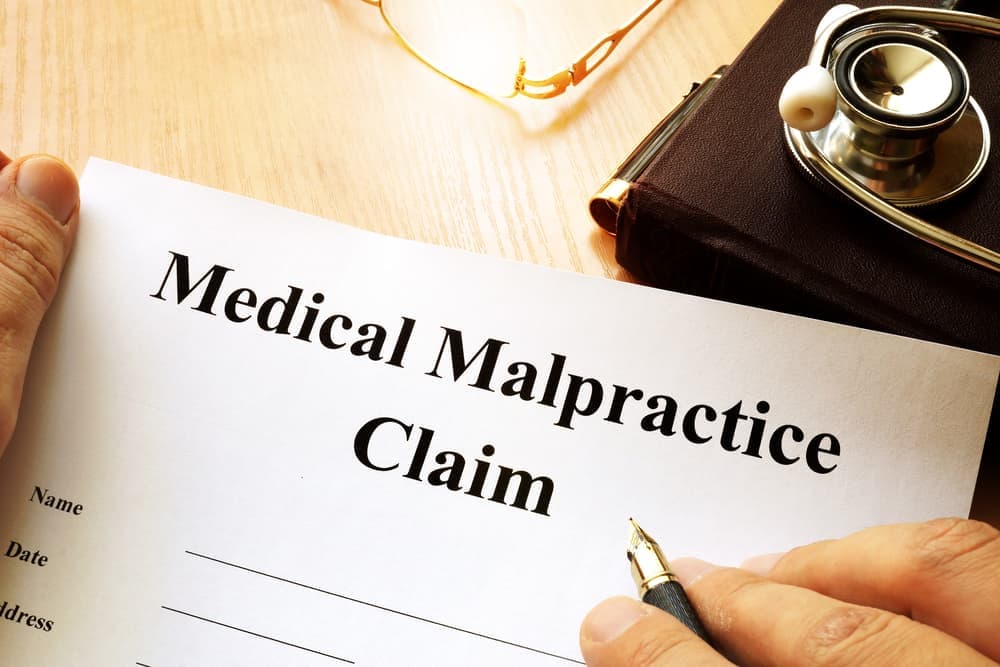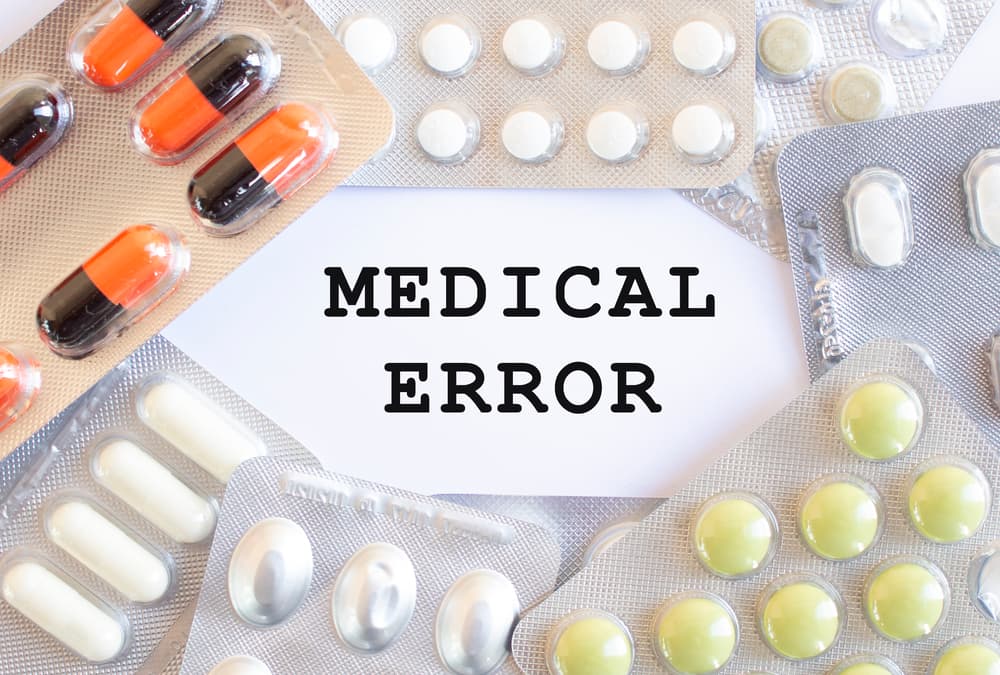We entrust medical professionals with our most valuable asset: our health. When we go to a hospital, we put our faith in doctors, therapists, surgeons, and other healthcare providers and expect them to cure us with nothing less than the highest standard of care.
Unfortunately, medical professionals do not always provide competent care and may end up causing harm, injury, or even death to patients due to negligence and errors.
When this happens, the harmed patient or their surviving family members can pursue a medical malpractice claim to sue individual providers and/or the facility for actions or inaction that deviate from accepted medical practices.
However, people do not always understand what constitutes medical malpractice and what steps to take to file a lawsuit against a negligent medical professional. For this reason, never wait to consult an experienced attorney who is well-versed in medical malpractice law and can seek the justice you deserve.
A skilled Bronx medical malpractice lawyer can educate you about the most common medical malpractice claims and explain whether or not your case has legal merits.
What Counts as Medical Malpractice?

Not all medical errors constitute medical malpractice. Statistically speaking, medical malpractice is not as common as many people think. An estimated 0.8 to 1 percent of hospital patients in the United States become victims of medical malpractice.
A healthcare provider can face a lawsuit for medical malpractice if he or she fails to provide the standard of care expected, which results in harm, injury, or death to the patient.
Healthcare providers must follow accepted medical practices when diagnosing and treating patients. Any deviation from such standards may constitute medical malpractice when a patient suffers harm.
While dozens of scenarios may give rise to a medical malpractice claim, some are more common than others.
In any scenario, the harmed patient or their surviving family members (in the event of the patient’s death) must establish these four elements:
- A doctor-patient relationship. First, the plaintiff must prove the existence of a doctor-patient relationship between them and the defendant. The relationship usually forms when a healthcare provider attends to a patient’s medical needs through consent.
- A deviation from the accepted standards of care. The second element requires proving that the defendant failed to adhere to the appropriate standard of care in the medical community. Establishing a deviation requires expert testimony from another medical professional in the same field.
- The defendant’s action or inaction results in harm. A patient cannot sue for medical malpractice if they cannot prove that the healthcare provider’s deviation from the accepted standards of care resulted in harm or injury. This may require proving that the harm or injury should not have happened without the defendant’s negligence.
- The plaintiff suffered damages. Finally, the plaintiff must demonstrate that the harm caused by the defendant’s failure to adhere to accepted standards of care resulted in actual damages (e.g., medical bills, lost income, reduced quality of life, etc.).
A mere dissatisfaction with the outcome of a medical treatment does not give grounds for a medical malpractice claim, as not all adverse outcomes constitute malpractice.
Get an experienced attorney to review your case to learn how to proceed with your claim.
The Most Common Medical Malpractice Claims
As mentioned earlier, medical malpractice occurs any time a healthcare provider deviates from the accepted standards of care, and the deviation harms the patient. Below is an overview of some of the most common types of medical malpractice claims:
Misdiagnosis
Diagnostic errors, including misdiagnosis, account for many medical malpractice claims in the United States. Unfortunately, these errors often lead to patient deaths. Researchers found diagnostic errors in up to 20 percent of autopsies in the U.S., which means up to 80,000 Americans die every year because of misdiagnosis, failure to diagnose, and other errors in diagnosis.
Misdiagnosis occurs when a patient receives a wrong diagnosis, while failure to diagnose means that a medical professional fails to diagnose a condition altogether. In either of these two scenarios, the patient can face delays in starting the appropriate treatment, their condition may get worse, and they may end up spending money on unnecessary treatments.
Childbirth Injuries
Many medical malpractice claims aim to hold medical professionals and facilities accountable for causing childbirth injuries. The mother and the infant face significant risks when healthcare providers engage in negligent conduct during labor or delivery.
When a childbirth injury is the result of any of the following, the parents can pursue a medical malpractice claim:
- Failure to monitor the vital signs of the infant and/or the mother
- Not performing a C-section when necessary
- Improper handling of the forceps or vacuum extractors
- Failure to diagnose maternal medical conditions
- Improper administration of medication
- Failure to address potential complications during a high-risk delivery
Common childbirth injuries resulting from medical malpractice include:
- Cerebral palsy
- Bell’s palsy
- Erb’s palsy
- Shoulder dystocia
- Hypoxia
- Brain damage
- Spinal cord injuries
Identifying what caused a child’s injury during labor or delivery and determining whether the doctor could have prevented the harm is not an easy task. It requires a second opinion from another medical professional in the same field.
Failure to Treat
Failure to treat is a broad term used to describe situations in which a medical professional does not examine a patient who is ill or releases a patient too soon.
Healthcare providers may face a lawsuit for failure to treat when they fail to order appropriate medical tests or do not consider a patient’s medical history when prescribing treatment. You can hold incompetent or overworked medical professionals liable for failure to treat.
Medication Errors

Many patients rely on medications to help them relieve pain, get better, and recover from injuries and illnesses. Unfortunately, medical professionals, including pharmacists, may make errors when prescribing medications.
Some of the most common medication errors that may give rise to medical malpractice claims include:
- Prescribing or giving the wrong medication, resulting in adverse reactions or ineffective treatment
- Prescribing or giving the wrong dosage (insufficient dosage or overdose)
- Prescribing or administering a medication the patient is allergic to
- Prescribing or administering a medication that does not interact well with other drugs the patient currently takes
Medication errors can result in adverse outcomes and serious harm to the patient. In the worst-case scenario, taking the wrong medication can kill the patient. The U.S. Food and Drug Administration (FDA) receives more than 100,000 reports from Americans complaining about a suspected medication error.
However, the medical professional who prescribes the medication may not bear liability for a defective or otherwise unsafe drug.
Surgical Errors
Surgical procedures do not always lead to positive outcomes. However, just because the outcome is negative does not necessarily mean that the surgeon or other professionals committed medical malpractice during the procedure. Every year, Americans file thousands of medical malpractice claims due to suspected surgical errors.
Some of the most common types of errors made by surgeons include:
- Operating on the wrong patient
- Operating on the wrong site on the patient’s body
- Leaving surgical instruments or other foreign objects in the patient’s body
- Failure to properly sterilize surgical instruments
- Failure to properly administer anesthesia
A large percentage of surgical errors occur due to poor communication, failure to follow surgical safety protocols, lack of experience, and other reasons. The above-mentioned types of medical malpractice claims are not the only situations in which patients can sue medical professionals for malpractice.
Any situation in which a healthcare provider deviates from the industry-accepted standards and causes harm to a patient can warrant a med-mal claim. Consult an attorney to explore your legal options and remedies.
How to Build a Medical Malpractice Case?
Building a strong medical malpractice case requires gathering compelling evidence to demonstrate that the defendant (the doctor or another liable party) failed to adhere to the accepted standards of care. The evidence typically includes medical records, witness statements from other patients and family members, expert opinions, photos, and others.
If a medical malpractice case is successful, the harmed patient can receive compensation for compensatory and punitive damages:
- Compensatory damages, which consist of economic and non-economic damages, are intended to compensate the plaintiff for his or her past and future expenses and losses, including both tangible and intangible ones (medical expenses, lost income, emotional distress, pain and suffering, and others).
- Punitive damages punish negligent doctors for outrageous conduct and deter them and other medical professionals from engaging in similar conduct. However, these damages only apply to a willful, malicious, or wanton defendant. Check with your med mal attorney whether your case can qualify for punitive damages.
Unfortunately, death is not an uncommon consequence of medical malpractice. Errors by medical professionals are the third leading cause of death in the United States.
If your loved one died because of a healthcare provider’s negligence or wrongful conduct, you and the rest of the family may seek damages, including compensation for funeral and burial costs, loss of support and guidance, loss of consortium, and others.
Who Can Face Lawsuits for Medical Malpractice?
In most cases, the medical professional whose conduct deviated from the standards of care can face a medical malpractice claim.
Any healthcare provider whose negligent conduct causes harm to patients can be sued for medical malpractice, including:
- Doctors
- Physicians
- Physician’s assistants
- Therapists
- Surgeons
- Dentists
- Nurses
- Pharmacists
- Pediatricians
- Oncologists
- Anesthesiologists
- Obstetricians
You can hold the hospital or another medical facility that employs the negligent medical professional liable for medical malpractice for vicarious liability.
Vicarious liability makes the medical facility indirectly accountable for malpractice.
However, you can hold medical facilities directly accountable for malpractice, including for:
- Failing to conduct proper background checks when hiring medical professionals
- Failing to confirm a medical professional’s education, licensing, and other background data
- Failing to investigate or address complaints against medical professionals
- Intentionally destroying medical records or otherwise covering up malpractice
An experienced medical malpractice lawyer can identify all potentially liable parties in your case to ensure that all negligent parties are accountable and you get the maximum compensation you deserve under the law.
If you or someone you love is a victim of medical malpractice, you have no time to waste. Each state has its statute of limitations, establishing a deadline for pursuing legal action. You will lose your right to seek compensation if you do not file a medical malpractice claim within the applicable timeframe.
Why You Need a Medical Malpractice Attorney
When you or a family member suffers harm or dies due to suspected medical malpractice, you need an attorney to handle your case.

A medical malpractice attorney can investigate your case's circumstances, determine if you have a valid claim, identify liable parties, and fight for fair and full compensation.
By taking legal action against a negligent medical professional and/or facility, you can obtain compensation for the damages and losses you have suffered, including medical expenses, loss of income, reduced quality of life, diminished earning capacity, and others.
Depending on the severity of the harm, injuries as a result of medical malpractice may require life-long treatment and may leave you unable to work and provide for your family. Filing a medical malpractice claim may also help prevent other people from harm by the negligent provider in the future.
Contact a skilled personal injury attorney to explore your legal options and discuss how to proceed with your claim. They can assess what caused your injuries and advise on the best course of legal action.



